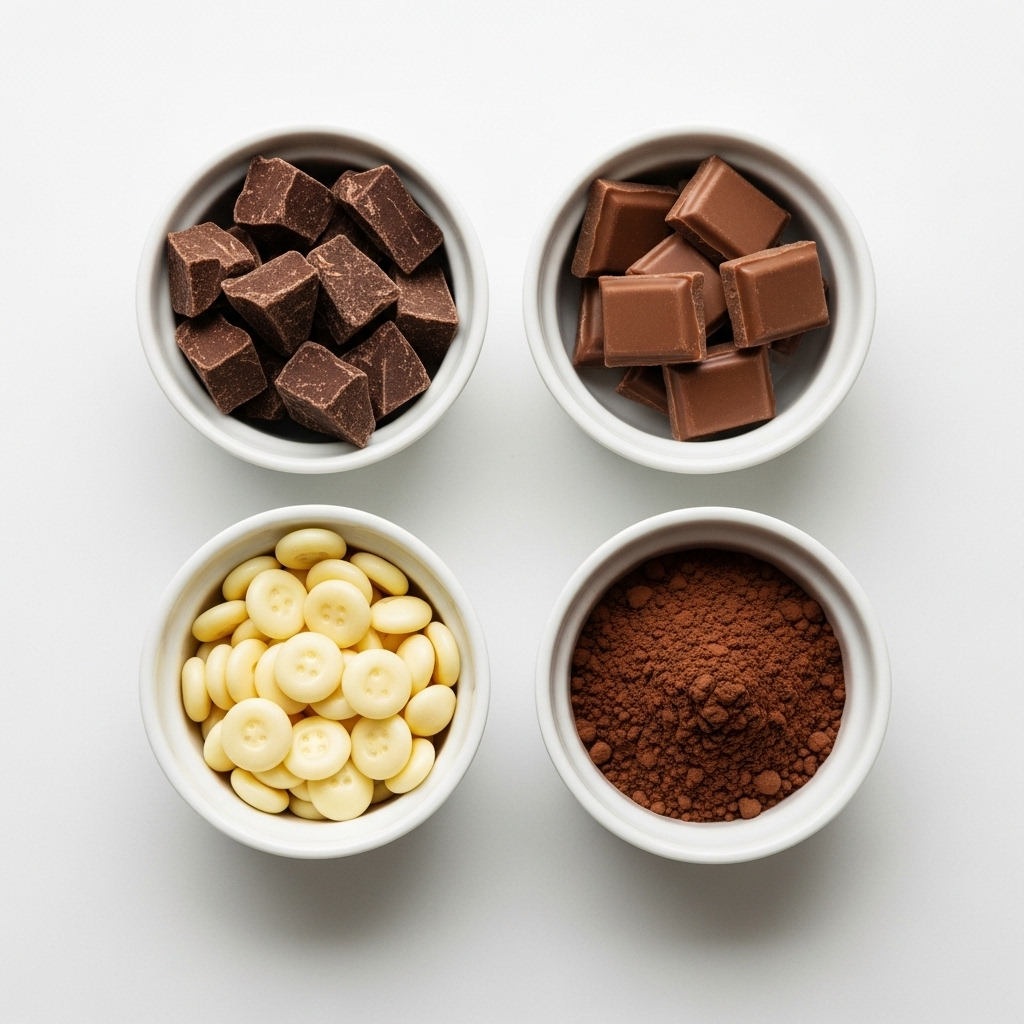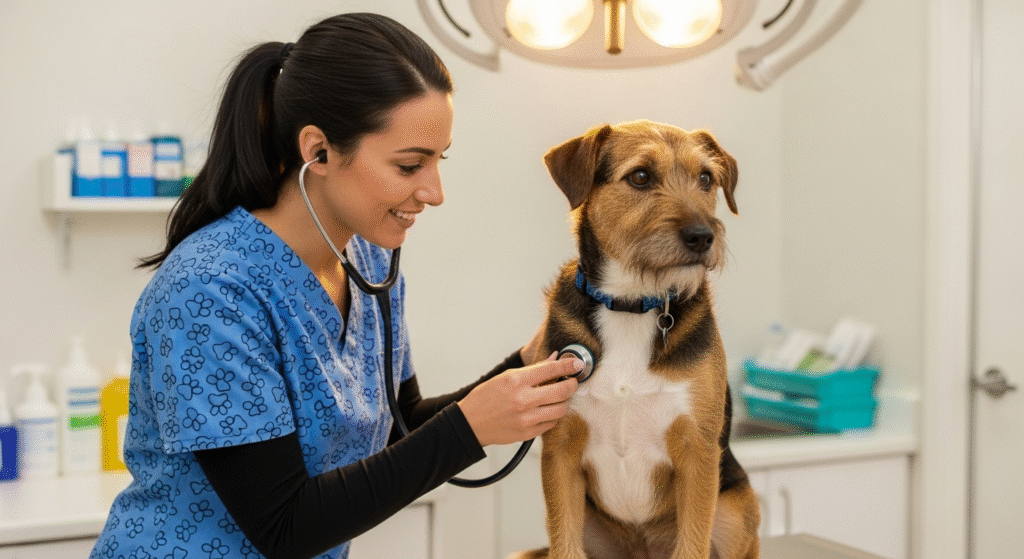Medical Disclaimer: This article is for informational purposes only and does not constitute medical advice. If you suspect your dog has ingested chocolate, contact your veterinarian or an emergency animal hospital immediately. This information is not a substitute for professional veterinary care.
Key Takeaways
Worried about chocolate poisoning in dogs? Here’s what you need to know, fast. Chocolate contains theobromine and caffeine, which are toxic to dogs because they can’t metabolize them effectively. The darker the chocolate, the more dangerous it is. Early signs include vomiting, diarrhea, and hyperactivity. These can quickly progress to tremors, seizures, and heart problems. Your dog’s size, the type of chocolate, and the amount eaten determine the severity. Do not wait for symptoms. If you know your dog ate chocolate, call your vet or the Pet Poison Helpline immediately. Early intervention is critical for a positive outcome and preventing severe chocolate poisoning in dogs.
Table of Contents
It’s a heart-stopping moment every dog owner dreads. You walk into the kitchen to find a ripped-open bag of chocolate chips on the floor and a very guilty-looking dog. Your mind races: How much did they eat? Is it enough to be dangerous? What do I do? The panic is real, and as a vet, it’s a call I get all too often.
A Vet’s Story: The Day a Boxer Ate a Whole Box of Chocolates
I’ll never forget a frantic call I got on a Boxing Day afternoon here in Ottawa. A lovely family’s 70-pound Boxer, “shukla,” had managed to open a gift box of expensive Belgian dark chocolates left under the tree. He’d eaten nearly the entire pound. When they brought him in, Barney was vibrating with nervous energy, his heart was racing like a drum solo, and you could just feel the distress. This was a classic, and severe, case of chocolate poisoning in dogs.
We had to act fast. Barney’s story is a potent reminder of how quickly a festive treat can turn into a veterinary emergency. Thankfully, his owners did the right thing by calling us immediately. This case highlights the critical importance of understanding the risks associated with chocolate poisoning in dogs and knowing when to seek help. We were able to decontaminate and stabilize Barney, but it was a close call that underscores why this is one of the most common poisonings we see in our canine companions.

What Makes Chocolate Toxic to Dogs? The Science Explained
So, why can we enjoy a chocolate bar without a problem, while it sends our dogs to the emergency room? The answer lies in their metabolism.
Theobromine and Caffeine: The Double Threat
Chocolate is derived from the cacao bean, which contains two chemicals from a class called methylxanthines: theobromine and caffeine. Humans can break down these compounds easily, but dogs metabolize them very slowly. This means that with each bite of chocolate, the toxins build up in their system to dangerous levels, leading to chocolate poisoning in dogs.
As the Merck Veterinary Manual explains, these substances act as stimulants, primarily affecting the central nervous system and the heart. The slow processing time—the half-life of theobromine can be up to 17.5 hours in a dog—is the core reason behind the severity of chocolate poisoning in dogs.
How Much Chocolate is Actually Deadly?
The toxicity of chocolate is all about the dose. It depends on three key factors:
- The type of chocolate: Darker and more bitter chocolates have more theobromine and are therefore more dangerous.
- The size of the dog: A tiny Chihuahua will be affected by a much smaller amount of chocolate than a Great Dane.
- The amount ingested: A single milk chocolate chip is unlikely to harm a large dog, but a whole bar could be a different story.
Mild signs of toxicity can occur at around 20 milligrams (mg) of theobromine per kilogram (kg) of a dog’s body weight. Cardiac signs appear around 40-50 mg/kg, and seizures can start at 60 mg/kg. It’s a scary reality of chocolate poisoning in dogs.
7 Key Signs of Chocolate Poisoning in Dogs
Symptoms usually appear within 6 to 12 hours of ingestion and can last for several days. If you notice any of these signs, you could be dealing with chocolate poisoning in dogs.
- Vomiting and Diarrhea: This is often the first sign as the body tries to expel the toxin. The high fat content in chocolate can also trigger pancreatitis, a painful and serious inflammation of the pancreas.
- Increased Thirst and Urination: Theobromine acts as a diuretic, causing the body to lose fluids.
- Restlessness and Hyperactivity: This is one of the hallmark signs I see in my clinic. The dog simply can’t settle down, pacing and panting due to the stimulant effect on their nervous system. This is a clear indicator of developing chocolate poisoning in dogs.
- Rapid Heart Rate (Tachycardia): The stimulation of the cardiovascular system can cause a dangerously fast or irregular heartbeat. This is a serious symptom of chocolate poisoning in dogs.
- Muscle Tremors: As the toxicity progresses, you may see fine or coarse muscle twitching.
- Seizures: This is a sign of severe chocolate poisoning in dogs and is a life-threatening emergency.
- Elevated Body Temperature (Hyperthermia): The intense muscle activity from tremors and hyperactivity can cause a dangerous spike in body temperature.
Recognizing these signs early can make all the difference in a case of chocolate poisoning in dogs.

At-Home Triage: A 5-Minute Checklist for Worried Owners
If you suspect your dog has eaten chocolate, stay calm and follow this checklist before you call the vet. This information will be vital.
- Secure Your Dog: Put your dog in a safe space where they can’t get into anything else.
- Gather the Evidence: Find the wrapper. What kind of chocolate was it (milk, dark, baker’s)? Try to estimate the maximum amount your dog could have eaten. Was it a 100g bar? Half a bag of chips? This is crucial for assessing the risk of chocolate poisoning in dogs.
- Check Your Dog’s Weight: Know your dog’s current weight. The vet will need this to calculate the potential toxic dose.
- Note the Time: When do you think the ingestion happened? This helps determine the treatment window.
- Call for Help: With this information in hand, call your veterinarian or an animal poison control center immediately. Do NOT induce vomiting at home unless specifically instructed to do so by a veterinary professional. For many cases of chocolate poisoning in dogs, at-home remedies can be ineffective or even harmful.
Which Types of Chocolate Are the Most Dangerous?
Not all chocolate is created equal when it comes to the risk of chocolate poisoning in dogs. The concentration of theobromine varies wildly.
| Chocolate Type | Approximate Theobromine (mg/oz) | Danger Level for Dogs |
| Cocoa Powder | 400–800 | Extremely High |
| Unsweetened/Baker’s | 390–450 | Extremely High |
| Dark (Semisweet) | 130–450 | High |
| Milk Chocolate | 44–60 | Moderate |
| White Chocolate | <0.1 | Minimal (Fat is the main concern) |
As you can see, baker’s chocolate and cocoa powder are the most potent sources of toxins, making them extremely dangerous. Even a small amount can cause severe chocolate poisoning in dogs. White chocolate, on the other hand, contains virtually no theobromine, but its high fat and sugar content can still lead to stomach upset or pancreatitis.
What to Expect at the Vet: Diagnosis and Treatment
If your vet determines the ingested amount was toxic, they will recommend you bring your dog in immediately. Swift action is the best defense against severe chocolate poisoning in dogs.
The Diagnostic Process
There isn’t a specific blood test to confirm chocolate poisoning in dogs. Diagnosis is based on the history you provide and the clinical signs your dog is showing. As described in Saunders Manual of Small Animal Practice, the vet will perform a full physical exam, paying close attention to your dog’s heart rate, temperature, and neurological status. This initial assessment is key to forming a treatment plan for chocolate poisoning in dogs.
Treatment
Treatment focuses on two main goals: removing the toxin and managing the symptoms. According to a recent 2024 review on chocolate toxicosis in pets, the mainstays of treatment are decontamination and supportive care.
- Inducing Vomiting: If the chocolate was eaten within the last few hours, your vet will likely give your dog an injection to make them vomit.
- Activated Charcoal: This is a black liquid that binds to any remaining theobromine in the stomach and intestines, preventing it from being absorbed into the bloodstream. This step is vital in mitigating the effects of chocolate poisoning in dogs.
- Intravenous (IV) Fluids: Fluids help to support the cardiovascular system and promote the excretion of the toxins through the urine.
- Medications: Depending on the severity, your dog may need medications to control seizures, manage heart arrhythmias, or regulate their heart rate. These interventions are critical when dealing with life-threatening chocolate poisoning in dogs.
- Monitoring: For severe cases, hospitalization for 24-72 hours may be necessary to monitor the heart and provide ongoing supportive care until the danger of chocolate poisoning in dogs has passed.
Typical Treatment Costs in Canada
The cost can vary significantly based on the severity. Here’s a rough idea for pet owners in Canada:
| Treatment Stage | Typical Cost Range (CAD) | Notes |
| Emergency Exam | $100 – $250 | Initial assessment fee. |
| Inducing Vomiting | $80 – $150 | Includes the medication. |
| Activated Charcoal | $100 – $200 | Per dose; multiple may be needed. |
| IV Fluids & Hospitalization | $800 – $2500+ | Per 24-hour period, for severe cases. |
Export to Sheets
These costs are estimates and don’t include medications or further diagnostics. Dealing with chocolate poisoning in dogs can be expensive, which is why prevention is so important.

3 Simple Ways to Prevent Chocolate Poisoning
Prevention is always the best medicine. The good news is that preventing chocolate poisoning in dogs is straightforward.
- Educate Everyone: Make sure everyone in your household, including children and guests, knows that chocolate is a no-go for dogs.
- Secure Storage: Keep all chocolate, cocoa powder, baked goods, and even certain garden mulches (cocoa bean mulch) well out of your dog’s reach. Think high shelves and secure cupboards.
- Teach a “Leave It” Command: A reliable “leave it” command is invaluable for all-around pet safety, not just for preventing chocolate poisoning in dogs.
People Also Ask: FAQs About Chocolate Poisoning in Dogs
- My dog ate one chocolate chip. Should I panic? Likely not, especially if you have a medium to large dog. A single milk chocolate chip has a tiny amount of theobromine. However, if you have a very small dog or if it was a dark chocolate chip, it’s always safest to call your vet to be sure and avoid any risk of chocolate poisoning in dogs.
- Are there any long-term effects of chocolate poisoning in dogs? For most dogs who receive prompt treatment, there are no long-term effects. However, severe cases that involve complications like major seizures or pancreatitis can have lasting consequences. This is why immediate veterinary care for chocolate poisoning in dogs is essential.
- Is carob a safe alternative to chocolate for dogs? Yes! Carob is a great, pet-safe alternative that looks like chocolate but contains no theobromine or caffeine. You can find dog treats made with carob at most pet stores.
- What about chocolate-covered raisins or coffee beans? This is a double emergency! Grapes and raisins can cause kidney failure in dogs, and coffee beans have high levels of caffeine. If your dog eats these, it’s even more critical to get to a vet immediately, as you’re dealing with multiple toxicities on top of the chocolate poisoning in dogs.
Final Thoughts from Your Ottawa Vet
As we saw with shukla the Boxer, a simple mistake can lead to a serious health crisis. Understanding the dangers of chocolate poisoning in dogs is a fundamental part of responsible pet ownership. The key is to act with informed urgency, not panic. Keep chocolate away from your furry friends, and if an accident happens, gather your information and call your vet right away. Your quick thinking is your dog’s best chance at a full and speedy recovery from chocolate poisoning in dogs.




